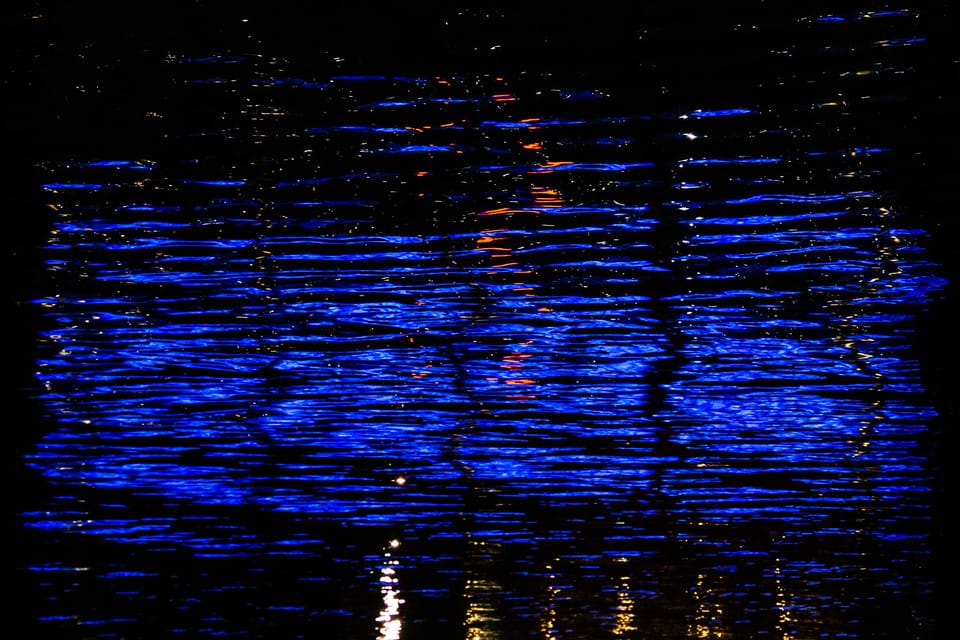Is It a Star or a Satellite?

The number of satellites circling the earth has been increasing exponentially with private companies announcing plans to launch thousands of new satellites. The satellites reflect sunlight, appearing as bright spots of light in the night sky. They also increase night sky brightness by approximately 10% at present levels and up to 250% if the number of satellites continues to increase.
The Soviet Union launched the first human-made satellite in 1957. It was the first of many satellites launched by the Soviet Union and the United States. In 2021, the situation changed significantly as commercial operators such as SpaceX and Starlink started competing for the opportunity to launch many, many more satellites. It’s been estimated that by 2030 there may be more than 100,000 satellites in orbit, a large majority owned and operated by private companies.
The megaconstellations (groups of satellites in low earth orbit working together to deliver broadband internet [Britannica]) offer huge benefits for rural residents who have had poor internet coverage in the past. “Space technologies also support better weather and climate monitoring, improve navigation and transportation logistics, and enhance agricultural productivity through the use of land- and water-quality sensors.” [The Walrus] However, the benefits are offset by significant liabilities. Satellites in space cause increased sky glow, impacting the health of humans, animals, and plants. They also impede our enjoyment of starry night skies. According to Dr. Samantha Lawler, assistant professor of astronomy at the University of Regina, people living at 50 degrees north and south will be the most affected by the proliferation of satellites due to “the geometry of sunlight and the orbits that have been chosen”.
A simulation taking into account the 65,000 satellites put forward by 4 megaconstellation companies indicates “from everywhere in the world, in every season, there will be dozens to hundreds of satellites visible for at least an hour before sunrise and after sunset”. [The Conversation] There will be no escaping it, even at the North Pole. There is little or no oversight of the satellites and to date the businesses running the satellites have taken very few measures to minimize the light pollution.
The potential problems don’t stop there. Larger numbers of objects in space will inevitably lead to increased collisions that could play havoc with our communication and navigation systems. Some of this junk will inevitably fall back to earth. The rockets used to launch the satellites release a mix of chemicals that can increase stratospheric temperatures and contribute to ozone depletion.
“Starlink plans to replace each of the 42,000 satellites after five years of operation, which will require de-orbiting an average 25 satellites per day, about six tons of material. The mass of these satellites won’t go away — it will be deposited in the upper atmosphere. Because satellites comprise mostly aluminium alloys, they may form alumina particles as they vaporize in the upper atmosphere, potentially destroying ozone and causing global temperature changes.” [The Conversation]
The low earth orbit is completely unregulated. There are no regulations concerning light pollution, atmospheric pollution from launches and re-entries, or collisions. We can’t yet predict whether they’ll improve internet connectivity or be financially viable. Professor Lawler says,
“With co-operation instead of competition between satellite companies, we could have many fewer in orbit. By changing the design of satellites, they could be made much fainter, having less of an impact on the night sky. We shouldn’t have to make a choice between astronomy and the internet. But without regulations requiring these changes, or strong pressure from consumers indicating the importance of the night sky, our view of the stars will soon be changed forever.” [The Conversation]
Further Information
Who Owns the Night Sky? [DarkSky]
Soon, 1 out of Every 15 Points of Lights in the Sky Will Be a Satellite [The Conversation]
Are We Going to Mess Up Outer Space Too? [The Walrus]
The New Space Race [35-min podcast, Outside/In Radio]
Megaconstellations of Satellites Are Burning Up in Our Atmosphere. That Could Have Consequences [CBC]
Artificial Light at Night: State of the Science 2024 [DarkSky]
Looking for the Stars in Western Canada [EcoFriendly West]
Photo credit: https://www.flickr.com/photos/apmckinlay/44827833515
EcoFriendly West informs and encourages initiatives that support Western Canada’s natural environment through its online publication and the Nature Companion website/app. Like us on Facebook, follow us on Twitter or Mastodon, or subscribe by email.

Member discussion